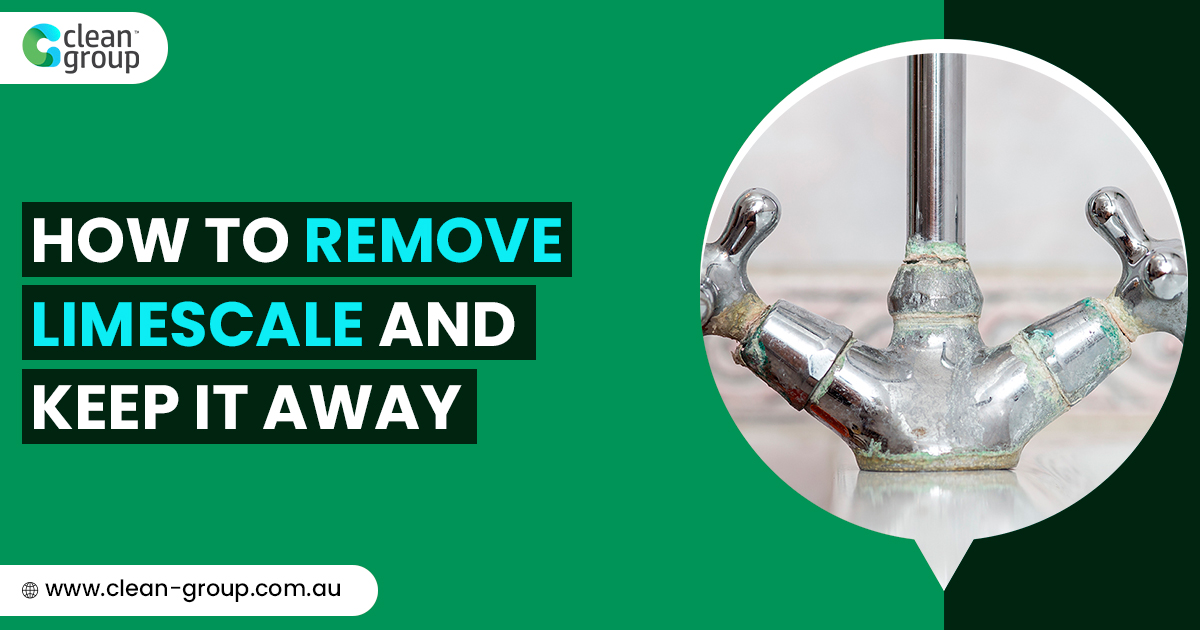Limescale is a hard off-white substance with a chalky consistency, mainly consisting of calcium carbonate, which builds up near places where hard water has evaporated. It is usually found in hot water boilers, washing machines, inside kettles, pipes, and plumbing fixtures. In bathrooms, it can be found in showerheads, taps, and plugs.
Limescale removal can be tough. It is an unfortunate by-product in bathrooms and gives an unhygienic and unsightly appearance. It is common in regions where hard water is prevalent.
Knowing how to Stubborn limescale is essential. If left neglected for a long time, it can cause appliances to get heavily stained.
Is Limescale Harmful?
It might be surprising to hear that limescale can be beneficial for human health. Limescale contains minerals that the body stores naturally and uses for many different kinds of processes.
However, hard water can have negative effects. Apart from drying out the skin, it can also impact your home. Hard Water in appliances such as washing machines, dishwashers, and kettles can be problematic as limescale can develop inside pipes and block them. It can also build up in appliances over time and prevent them from working as they should.
How can you remove limescale?
You can use homemade solutions or chemicals to eliminate limescale. Some of the items you might need in limescale removal include:
- Gloves
- Bathroom cleaner
- White vinegar
- Lemon juice
- Cotton wool
- Elastic bands
- Clean and old clothes
- Baking soda
- Cup
- Spray bottle
Tips to Eliminate Limescale from Pipes
Even if the limescale in pipes is not easily visible, this does not mean that it cannot be cleaned. To eliminate it, you can utilize ready-made cleaning products which are easily available in major supermarkets. Cleaning of stubborn stains is equally important along with cleaning of limescale.
Alternatively, you can use a baking soda and vinegar solution. This is chemical-free and is especially useful when you have children or pets around or have certain allergies. To start, mix eight liters of white vinegar with a cup of baking soda per drain. You might also utilize this on your bath and basin. Make sure that your pipes do not have any water in them before you use the solution.
Begin by placing the baking soda in every drain, followed by pouring the vinegar and leaving it there for three to four hours. Later, pour boiling water down the drain.
Tips to Remove Limescale from Your Toilet
You can use various mainstream methods to remove calcium carbonate from a toilet using chemical cleaners or vinegar. If you decide to utilize chemical cleaners, remember they have bleach in them so keep adequate ventilation when using them. In addition, make sure none of it gets on your skin.
Commercial cleaners in Sydney can be useful for washing beneath the rim, and many feature-shaped bottles exist that you can use to access the area. Chemical cleaners usually need thirty minutes to work.
You can also eliminate calcium carbonate stains from a toilet bowl using vinegar. There are various ways to apply vinegar to clean these stains, all based on the amount of limescale and thickness.
If the limescale is present in smaller bits, mix the vinegar with water inside a spray bottle. Spray it onto the built-up strain and brush it away.
To clean thoroughly, place white vinegar all over the bowl covering the hard-to-reach areas as well. After that, let the vinegar work for several hours or overnight. Scrub any limescale deposits that might be leftover using a toilet brush. When it comes to the rim, spray the mix onto the rim and use a brush to rub it.
If it is difficult to eliminate limescale from some areas of the bowl, utilize sandpaper to wear down or remove the stain. Do not press hard with the paper since you can ruin the bowl. Flush away any residues and clean them.
Tips to Eliminate Limescale from Taps
When you need to remove limescale from taps, lemon or vinegar works best outside of chemical cleaners. You need to eliminate limescale from the body, levers, and water outlet of the tap as these are the areas where it is likely to form.
To eliminate limescale from the spout or water outlet, fill a bottle cap with vinegar or lemon juice and place it near the spout. Then, make sure that the water outlet is completely submerged in the liquid. Fasten the cap in place either with an elastic band or tape and leave it overnight.
Lemon juice is ideal for tackling stubborn and thicker limescale. For your tap’s upper parts, soak a cloth or cotton wool in either lemon juice or vinegar, and wrap it around the taps. Fix it in place with an elastic band. Make sure it remains like that for several hours or overnight, based on how much limescale is present.
You can then scrub the taps to eliminate all the residue. When using lemon juice or vinegar, take into consideration which kind of taps you have. If the taps are chrome or gold plated, avoid using vinegar since it can ruin the finish.
You can also cut a lemon and then attach it to the spout. After you complete cleaning, use a clean cloth to rub the taps for additional shine.
Tips to Remove Limescale from the Showerhead
When calcium carbonate clogs a shower handset, the water usually squirts in many different directions, but never flows down properly.
You can use homemade solutions of lemon juice or vinegar to clean your showerhead. To use either lemon juice or vinegar, remove the showerhead and place it in a bowl or bucket. Then, fill the container with enough warm water to immerse the showerhead along with a mixture of water and vinegar/lemon juice. Let it soak for a little less than half an hour.
Quick Suggestions for Preventing Limescale Buildup
It is easy to prevent the buildup of limescale. A simple way is to soften the hard water which flows out of taps and through pipes in your home.
You can do this in a variety of ways, based on the object in question:
- Washing machine: Add a water softener in the form of a liquid or powder.
- Pipes: Magnetic descalers clamp onto the exterior of pipes and keep minerals from forming limescale.
- Showerheads and taps: You can apply carbon water filters to eliminate the hardness of the water
- Water supply: Use a water softener. This will protect your entire house from limescale thus also preventing appliance damage.
- Appliances: In areas with hard water, some individuals choose to use bottled water only in their irons and kettles to prevent the formation of limescale.

